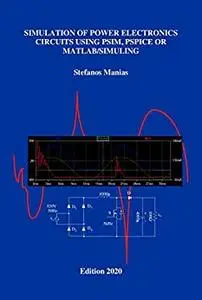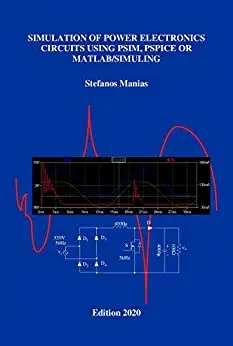SIMULATION OF POWER ELECTRONICS CIRCUITS USING PSIM, PSPICE OR MATLAB/SIMULING by Stefanos Manias
English | 2020 | ISBN: N/A | ASIN: B088HJ38PM | 228 pages | PDF | 17 Mb
English | 2020 | ISBN: N/A | ASIN: B088HJ38PM | 228 pages | PDF | 17 Mb
In the last two decades, simulation tools made a significant contribution to the great progress in development of power electronics. Time to market was shortened and development costs were reduced drastically. Falling costs, as well as improved speed and precision, opened new fields of applications. A comfortable number of powerful simulation tools is available. The users have to choose the best suitable for their application. In this book the advantages and disadvantages between the software tools, PSPICE, LTSPICE, PSIM and MATLAB/SIMULING are presented in order someone to be able to select the appropriate simulation program for a specific simulation program. A SPICE based simulation package, MATLAB and PSIM have been used for simulating the power electronic circuits like rectifiers, inverters, choppers and AC voltage controllers.
Computer circuit simulation is a great learning tool inasmuch as one can examine new circuit ideas and learn from the simulation results. Circuit simulation is a technique for checking and verifying the design of electrical and electronic circuits and systems prior to manufacturing and deployment. It is used across a wide spectrum of applications, ranging from integrated circuits and microelectronics to electrical power distribution networks and power electronics.
In this book the following Power Electronics simulation programs are presented and analyzed:
1) Matlab/Simulink
2) PSPICE and LTSPICE
3) PSIM
Each simulation program is explained step by step and a big number of examples are included.
The simulation examples are divided into the following six sections:
1) Circuits and diode rectifiers (6 examples)
2) Thyristor rectifiers (10 examples)
3) Inverter circuits and power semiconductor switches (12 examples)
4) DC-DC power converters (12 examples)
5) AC voltage controllers (4 examples)
6) Switching rectifiers and active power factor correction (9 examples)
Feel Free to contact me for book requests, informations or feedbacks.
Without You And Your Support We Can’t Continue
Thanks For Buying Premium From My Links For Support
Without You And Your Support We Can’t Continue
Thanks For Buying Premium From My Links For Support



